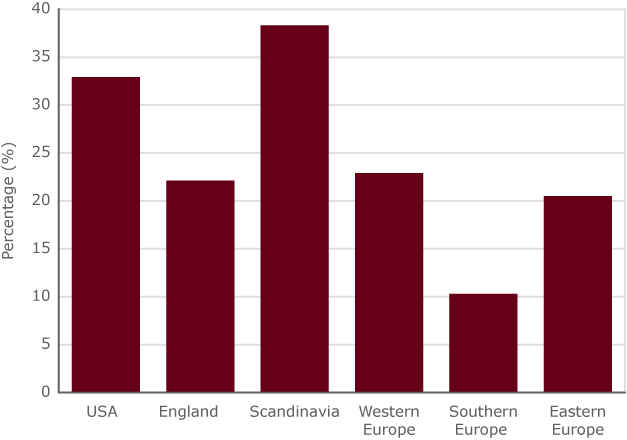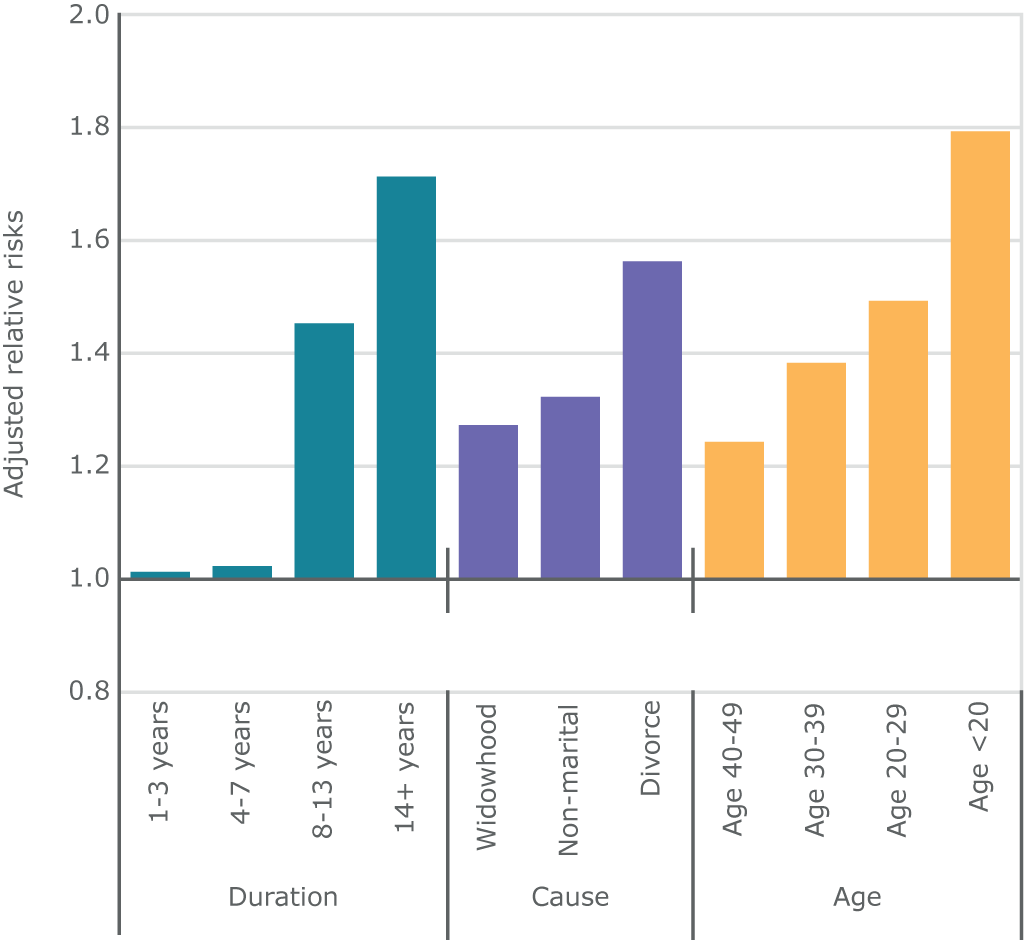Lone motherhood is increasing in many countries. The experience of parenting without a partner is generally associated with health problems, including physical limitations in daily activities and poor health. In their study, Lisa Berkman, Yuhui Zheng, M. Maria Glymour, Mauricio Avendano, Axel Börsch-Supan, and Erika L. Sabbath look at the single motherhood histories of older women to answer the following questions: How does single motherhood relate to health at older ages? Do these effects vary across 13 European countries, England, and the USA?
Berkman and her colleagues found that women who have experienced single motherhood have worse health at older ages than married mothers. Moreover, single motherhood has the greatest negative effect on health in later life in countries such as the USA, England, Denmark, and Sweden – countries where social and family support networks may be weaker.
The findings of the study also identify more vulnerable subgroups among single mothers: Mothers who were single for long periods of time, those who became single mothers after getting divorced, those who experienced single motherhood at younger ages, and single mothers with more than two children have the highest risks of limitations in daily activities and poor health in later life.
Social policies may help moderate the negative influence of single parenting on women’s health. The authors highlight the necessity of further planning and policies aimed at protecting such vulnerable groups to benefit both single mothers and their families.
Worse health for single mothers but with some important differences
The study at hand looks at women over 50 years of age who have at least one child under age 18 and were not married in any year between the ages 15 and 49. The results show that the prevalence of single motherhood varies greatly across regions (Figure 1), from the lowest percentage in Southern Europe (10.2%), the middle range (around 20%) in England and Western and Eastern Europe, to the highest in the USA (32.8%) and Scandinavian countries (38.2%). But what these regions do share is the most common reason for lone parenting: divorce.
Lisa Berkman and her colleagues demonstrate that health in later life also diverges according to duration, type, and age of single motherhood (Figure 2). In fact, women who were single mothers for more than fourteen years are more likely to have limitations in daily activities at older ages than those who experienced shorter lone parenting periods. Such limitations are also higher for single mothers who get divorced if compared to widows and for women who were single at younger ages versus those who experienced single motherhood later in life.
Regarding cross-country differences, the research team points out that single motherhood is linked to both limitations in daily activities and poor health in England, Denmark, Sweden, and the USA but only to poor health in Western Europe. In Southern European countries, where family solidarity is the rule, single motherhood is not associated with any kind of health problems later in life.

Figure 1. Percentage of mothers aged 50+ who had a single motherhood experience between the ages of 15-49, by region.
Notes: Scandinavia (Denmark and Sweden), Western Europe (Austria, France, Germany, Switzerland, Belgium, Netherlands), Southern Europe (Italy, Spain, Greece), Eastern Europe (Poland, Czech Republic).

Figure 2. Single motherhood and adjusted relative risks of activities of daily living limitations among mothers aged 50+ by duration, causes, and ages of single motherhood.
Notes: The comparison group is mothers who did not have a single motherhood experience before age 50. Independent variables are dummies.
This Population Digest has been published with financial support from the Progress Programme of the European Union in the framework of the project “Supporting a Partnership for Enhancing Europe’s Capacity to Tackle Demographic and Societal Change”.